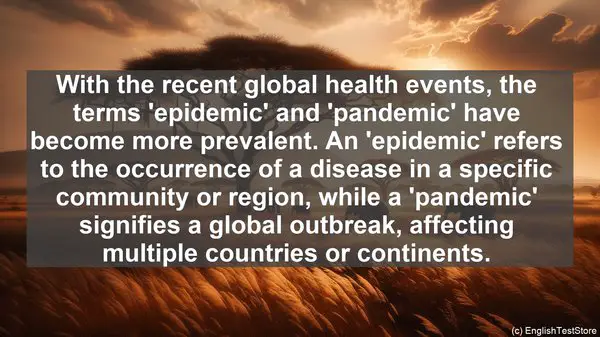Introduction
Today, we’re diving into the world of health policy. But before we get started, it’s important to clarify some commonly confused words that often arise in this field. So, let’s jump right in!
1. Policy vs. Law
The terms ‘policy’ and ‘law’ are often used interchangeably, but they have distinct meanings. A policy is a set of guidelines or principles that guide decision-making, while a law is a binding rule enforced by a governing body. In health policy, policies are often created to inform the development of laws.
2. Access vs. Coverage
While ‘access’ and ‘coverage’ both relate to obtaining healthcare services, they differ in scope. ‘Access’ refers to the ability to obtain care, including factors like affordability and proximity. On the other hand, ‘coverage’ specifically pertains to having insurance that pays for healthcare services.
3. Quality vs. Quantity
In health policy, the terms ‘quality’ and ‘quantity’ are frequently discussed. ‘Quality’ refers to the level of care provided, including factors like safety and effectiveness. Conversely, ‘quantity’ relates to the number of services or procedures performed, often considered in terms of cost and resource allocation.

4. Cost vs. Price
Although ‘cost’ and ‘price’ are often used interchangeably, they have distinct meanings. ‘Cost’ encompasses the overall expenditure associated with a healthcare service, including direct and indirect expenses. ‘Price,’ on the other hand, refers specifically to the monetary value assigned to a service or product.
5. Outcomes vs. Outputs
When evaluating the effectiveness of a healthcare system, ‘outcomes’ and ‘outputs’ are key considerations. ‘Outcomes’ refer to the results or impacts of care, such as improved health or reduced mortality. ‘Outputs,’ on the other hand, are the immediate products or services delivered by the system.
6. Efficacy vs. Effectiveness
In the context of treatments or interventions, ‘efficacy’ and ‘effectiveness’ have distinct meanings. ‘Efficacy’ refers to the ability of a treatment to produce a desired effect under ideal conditions, often determined through controlled trials. ‘Effectiveness’ assesses the real-world impact of a treatment, considering factors like patient adherence and practicality.
7. Provider vs. Payer
In the realm of health insurance, it’s important to differentiate between a ‘provider’ and a ‘payer.’ A ‘provider’ is a healthcare professional or facility that delivers care, while a ‘payer’ is the entity, such as an insurance company or government program, responsible for reimbursing the provider for the services rendered.
8. Inpatient vs. Outpatient
When it comes to hospital care, the terms ‘inpatient’ and ‘outpatient’ are used to distinguish between different levels of treatment. An ‘inpatient’ refers to someone who is admitted to the hospital and requires overnight stay, while an ‘outpatient’ receives care without being admitted and can go home the same day.
9. Primary Care vs. Specialty Care
In the healthcare system, there are different types of care. ‘Primary care’ refers to the initial point of contact for general health concerns, often provided by a family physician or general practitioner. ‘Specialty care,’ on the other hand, involves more specialized services provided by healthcare professionals with advanced training in a specific area.

10. Epidemic vs. Pandemic
With the recent global health events, the terms ‘epidemic’ and ‘pandemic’ have become more prevalent. An ‘epidemic’ refers to the occurrence of a disease in a specific community or region, while a ‘pandemic’ signifies a global outbreak, affecting multiple countries or continents.
